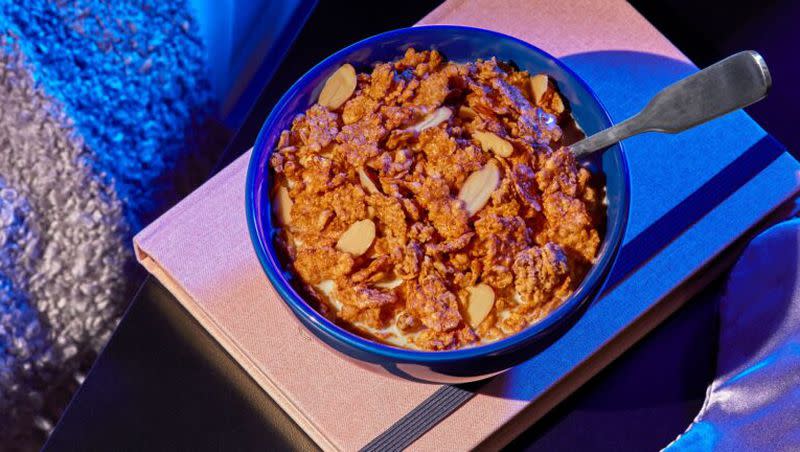Trouble sleeping? A new cereal might be just what you need

You might want to add a daily fourth meal to enhance your nighttime routine.
Post, makers of Honey Bunches of Oats and Golden Crisp, has created Sweet Dreams, a cereal that is supposed to help you fall asleep.
A late-night bowl of cereal could put breakfast as the second most important meal of the day. The cereal brand is marketing Sweet Dreams as the first ready-to-eat cereal designed to help boost a good sleep routine.
Sweet Dreams comes in two flavors: Blueberry Midnight and Honey Moonglow. Both flavors boast of having sleep-aid ingredients such as lavender and chamomile, as well as “curated vitamins and minerals to support natural melatonin production.”
“Sweet Dreams helps to promote a healthy sleep routine through intentionally designed ingredients like whole grains, a nighttime herbal blend, and vitamins and minerals including zinc, folic acid, and B vitamins to support natural melatonin production,” Logan Sohn, senior brand manager of Post Consumer Brands, told Wellandgood.com.
However, it’s long been believed that eating right before bed is bad for sleep and health. Researchers say that as a general rule of thumb, you should eat no sooner than three hours before going to sleep. According to The Washington Post, “some studies have found that eating late-night meals, including those with a lot of added sugar, actually can worsen your sleep and increase your risk of obesity. Although some of the vitamins contained in Post’s new cereal can influence your body’s melatonin levels, experts say it’s not clear that they’ll have more than a minor impact, especially when consumed in the evening.”
Whether Sweet Dreams works or not, many people are willing to try just about anything if it will ensure a good night's sleep. Insomnia is the most common sleep disorder for Americans. Research published in the American Journal of Managed Care shows that in-office doctor diagnoses increased from 800,000 to 9.4 million cases from 1993 to 2015. More than half of American adults have trouble sleeping and 1 in 5 have insomnia.
The makers behind Sweet Dreams understand that people take their nighttime routine seriously in hopes of boosting their sleep.
“More than ever, consumers are looking to embrace acts of self-care. We often see this come to life through a relaxing nighttime routine that provides the basis for a good night’s sleep. This inspired us to create a product that not only satisfies that nighttime snack moment but also is part of a healthy sleep routine,” Sohn said.
According to Well+Good, Sweet Dreams has the “big three” ingredients linked to improving sleep: “fiber (12% of your daily intake per cup), magnesium (with 8% of your DV per cup, thanks to sleep-boosting ingredients like almonds), and melatonin (from vitamins that help promote its production, like zinc and B vitamins).”
Sweet Dreams has ingredients that improve sleep, but it also has up to 13 grams of added sugar.
Neurologist and sleep physician Dr. Brandon R. Peters told LiveStrong, “Sugar may act as an inflammatory that disturbs sleep; it is best to avoid it as much as possible close to bedtime. As a general rule, I recommended that someone not eat sugar for two to three hours before bedtime to allow for proper digestion.”
Still, the cereal company promotion said that Sweet Dreams is “designed to support a good sleep routine and a fresh start to the next day.”

